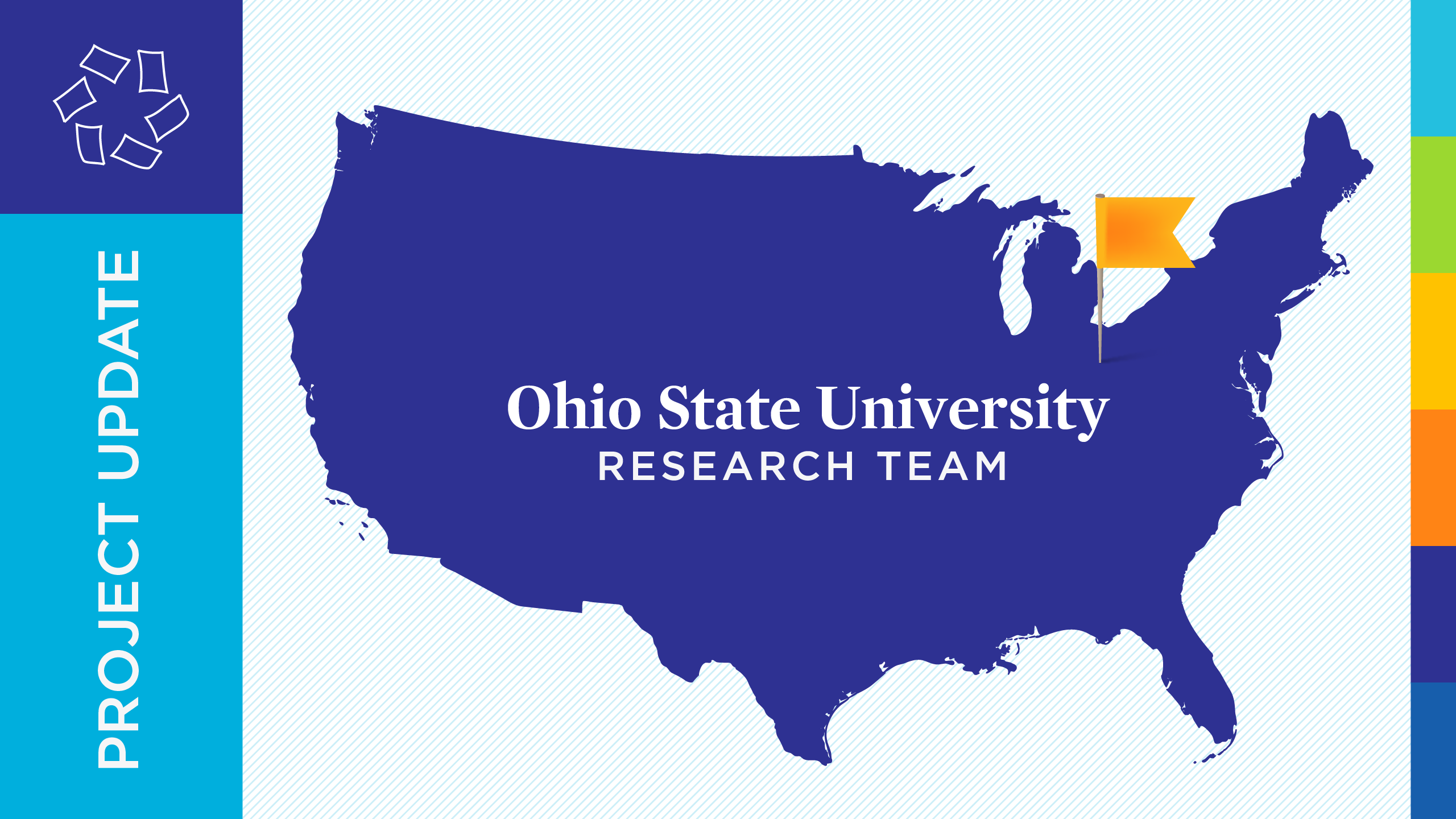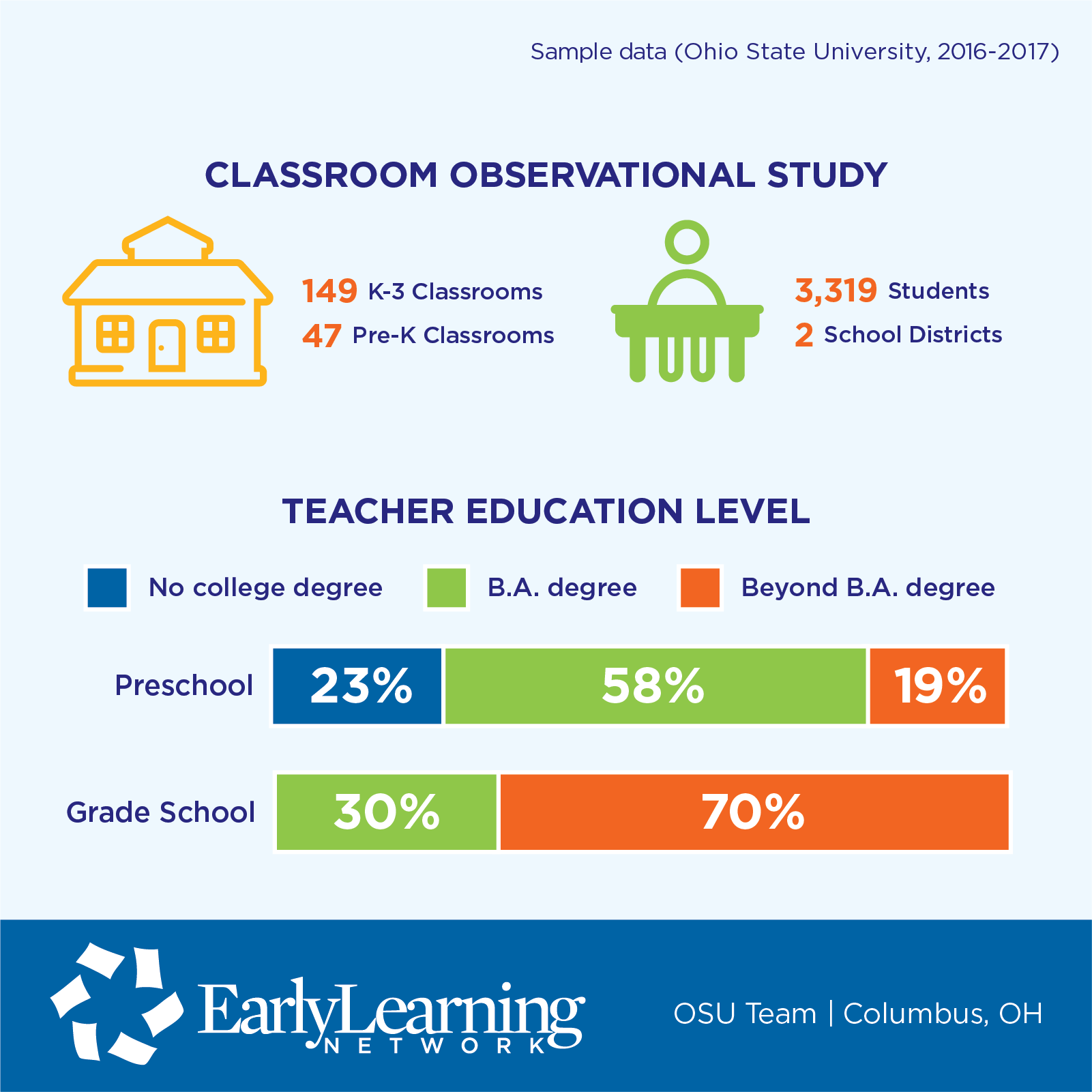
31 Aug Project update: Ohio State University
Early Learning Ohio
The Early Learning Network’s research team at Ohio State University is conducting three interconnected research studies as part of the project, Early Learning Ohio (ELO): Critical Contributions of Classroom Ecology to Children’s Learning. ELO contributes to the network’s collective goal to better understand how policies and practices influence children’s ability to maintain early learning success and narrow the achievement gap.
The ELO program includes data collection and analyses for a policy and practice study, a classroom observation study and a longitudinal study following children as they move from preschool to third grade. The OSU team is particularly interested in examining how friendships formed in the classroom influence children’s learning and development.
The team has collected data from the 2016-17 and 2017-18 academic years, and is currently diving into data analyses and exploring preliminary findings.
Below is a summary of the OSU team’s research progress to date.
Policy and Practice Study
The OSU team is wrapping up two years of interviews to examine Ohio’s statewide policies and practices that support pre-K to third grade learning and school achievement. The researchers interviewed school district personnel (e.g. superintendents, school board members, principals, and teachers) and non-district stakeholders (e.g. Department of Education personnel, County Educational Service Center Members and child focused organizations) to gather data from different perspectives.
Thus far, 130 interviews have been completed in 24 school districts. An additional three districts will be interviewed in fall 2018. Twenty-one interviews have been completed with non-district stakeholders. Themes emerging from current interview manuscripts include transitioning to kindergarten and the third grade reading guarantee, the latter a state-level policy focused on three-grade retention and promotion based on reading skills.
Classroom Observation Study & Longitudinal Study
The OSU research team is conducting two additional studies: an observational study of pre-K to third grade classroom ecologies and a longitudinal study of children’s transitions from pre-K to third grade.
The observational study was conducted in the 2016-17 and 2017-18 academic years with two different classroom cohorts. This study included 149 kindergarten to third grade classrooms in two school districts. The participating 47 preschool classrooms had to be located in the physical boundary of a participating school district to be included in the study.
A total of 3,319 students consented to participate in the study. The OSU team was able to follow 172 pre-K attenders through their kindergarten year. Within the same district and classrooms as our pre-K attenders, the team also consented and followed 140 non-pre-K attenders.
The researchers aim to follow 400 students into first grade. These 400 students will include the original pre-K attenders and the non-pre-K attenders, as well as 88 additional pre-K attenders who were recruited in kindergarten.
Current manuscripts based on the observational study include the following characteristics:
- Classroom social networks across pre-K to third grade
- Contributions of friendships, social networks, peers’ abilities to children’s early academic and social behavioral development
- Kindergarten transition
 Classroom Networks: How Do Social Experiences Affect Learning?
Classroom Networks: How Do Social Experiences Affect Learning?
The ELO project in Ohio places a unique focus on students’ social and learning experiences with peers —a major dimension of classroom ecology that can have long-lasting impacts on students’ academic life and psychological well-being.
The project captures various forms of peer experiences. Specifically, the team is examining classroom networks and their social and relational structures by using a peer nomination task. In a peer nomination task, researchers meet individually with a student and ask him or her questions about his or her relationships with other peers in the classroom. For example, “In your classroom, who do you like to play with the most?” This information is gathered from the student in both the fall and spring of the school year. This allows researchers to determine if classroom networks change over the school year.
This work is especially interesting because it allows classroom networks to be measured with respect to their centralization and density levels. Centralization represents a classroom network’s hierarchy. Centralization patterns could look like a cohesive core of children or a more uniform distribution of children across the network. Density represents the degree of interconnectedness among children in a network. The more ties students have with others (the more peers each student nominates), the greater the network density.
If a classroom network’s social ties are highly associated with certain social values or behaviors, a high-density network will accelerate children’s acquisition of these values or behaviors, whereas a loose network can attenuate this acquisition.
The ELO project currently has two years of classroom network data and will continue to collect this data over the next three years.
What’s Next?
The OSU team’s next year of data collection involves continuing to follow the longitudinal sample participants as they enter first grade classrooms in the 2018-19 academic year. The researchers will continue to identify malleable factors within the classroom, including student peer relationships, social network structures, classroom composition, teacher practices and classroom quality.
Additionally, they will begin collecting data for the OLOS (observation tool) project in partnership with the larger network.
Learn more about OSU’s Early Learning Ohio research program.

